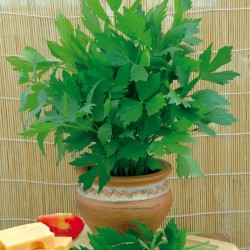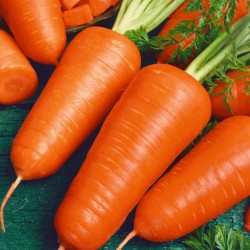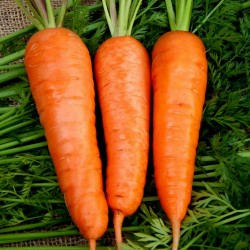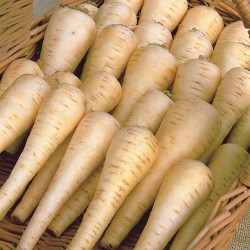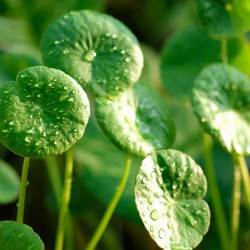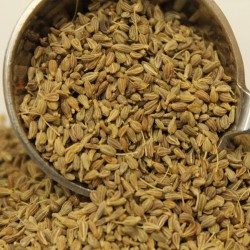
Nasiona Biedrzeniec anyż...
Cena
2,25 €
SKU: MHS 7
Seeds Gallery Com,
5/
5
<h2><strong>Nasiona Biedrzeniec anyż (anyż, anyżek) (Pimpinella anisum)</strong></h2>
<h2><span style="color: #fd0303;"><strong>Cena za Pakiet 150+ nasion (0,5g).</strong></span></h2>
<p><strong>Biedrzeniec anyż</strong> (anyż, anyżek) (<em>Pimpinella anisum</em> L.) – gatunek jednorocznej rośliny z rodziny selerowatych. Pochodzi, najprawdopodobniej, ze wschodnich obszarów basenu Morza Śródziemnego<sup id="cite_ref-S_4-0">[4]</sup>. Jego przodkiem, jako rośliny uprawnej, jest biedrzeniec kretycki (<em>Pimpinella cretica</em> Poir), pochodzący z wyżyn Iranu. Współcześnie biedrzeniec anyż występuje wyłącznie w uprawie; nie jest znany ze stanowisk naturalnych<sup id="cite_ref-grin_3-1">[3]</sup>. W Polsce jest uprawiany (rzadko) i czasami, przejściowo, dziczejący (efemerofit).</p>
<dl>
<dt>Łodyga</dt>
<dd>Do 50 cm wysokości. Dęta (pusta w środku, w międzywęźlach), okrągła, płytko bruzdkowana. Rozgałęziona na 2/3 wysokości.</dd>
<dt>Liście</dt>
<dd>Zmienne w zależności od umiejscowienia. Najniższe długoogonkowe, okrągławe, ząbkowane; środkowe również długoogonkowe, ale 3-5-sieczne, ząbkowane; górne liście siedzące, 2-3-krotnie pierzastosieczne lub niepodzielone.</dd>
<dt>Kwiaty</dt>
<dd>Białe, płatki owłosione, odpadające, zebrane w płaskie baldachy, złożone z 5-10 szypułek; baldaszki 4-9-kwiatowe. Kwitnie w czerwcu i lipcu. Obcopylne, miododajne.</dd>
<dt>Owoc<sup id="cite_ref-FPX_5-0">[5]</sup></dt>
<dd>Rozłupnia jest jajowata lub gruszkowata o bokach lekko spłaszczonych, żółtawozielona lub zielonawoszara, 3–5 mm długa i do 3 mm szeroka. Zwieńczona jest stylopodium z dwoma krótkimi, odgiętymi ostrymi końcami. Rozłupki są na szczycie przyrośnięte do ośki i połączone z płaską płaszczyzną spojenia i wypukłą powierzchnią grzbietową. ta ostatnia pokryta jest krótkimi włoskami o brodaweczkowanym naskórku, widocznymi przy użyciu lupy. Każda rozłupka ma 5 pierwotnych, przebiegających podłużnie żeberek, w tym 3 grzbietowe i 2 boczne żeberka słabo wystające i jaśniejszej barwy.</dd>
<dt>Korzeń</dt>
<dd>Cienki, palowy.</dd>
</dl>
<h2><span id="Zastosowanie">Zastosowanie</span></h2>
<h3><span id="Ro.C5.9Blina_lecznicza"></span><span id="Roślina_lecznicza">Roślina lecznicza</span></h3>
<p>Najstarsze wzmianki o anyżu pochodzą z egipskiego papirusu Ebersa (1500 r. p.n.e.). W Polsce uprawiany jest od średniowiecza, kiedy to został sprowadzony przez benedyktynów.</p>
<dl>
<dt>Surowiec zielarski<sup id="cite_ref-FPX_5-1">[5]</sup></dt>
<dd>Owoc anyżu (<em>Anisi fructus</em>) – cała, wysuszona rozłupnia, często z małym fragmentem cienkiej, sztywnej, lekko zgiętej szypułki. Surowiec zawiera nie mniej niż 2 ml/kg olejku eterycznego anyżowego.</dd>
<dt>Działanie i zastosowanie</dt>
<dd>Owoce działają wykrztuśnie (składnik syropów), rozkurczowo, moczo- i wiatropędnie, także pobudzają laktację. Działają także w niewielkim stopniu przeciwbakteryjnie. Olejek anyżowy jest środkiem smakowym i aromatycznym, wykorzystywanym w przemyśle spożywczym, perfumeryjnym i farmaceutycznym oraz spirytusowym (anyżówka)<sup id="cite_ref-S_4-1">[4]</sup>. Działa: zewnętrznie odkażająco na skórę, toksycznie na pasożyty, odstraszająco na owady; wewnętrznie wykrztuśnie i rozkurczająco – do inhalacji, w pediatrii jako środek wiatropędny.</dd>
</dl>
<h3><span id="Ro.C5.9Blina_pastewna"></span><span id="Roślina_pastewna">Roślina pastewna</span></h3>
<p>Wytłoki anyżowe oraz słoma stanowią cenny dodatek paszowy dla bydła zwiększający jego laktację.</p>
<h3><span id="Ro.C5.9Blina_uprawna"></span><span id="Roślina_uprawna">Roślina uprawna</span></h3>
<p>Nasiona w kwietniu wysiewa się do gruntu, owoce zbiera się w końcu sierpnia. Osypują się. Nierównomierne dojrzewanie. Zbierany, gdy owoce głównych baldachów są twarde, szarobrunatne. Plon 1t/ha.</p>
MHS 7 (150 S)





